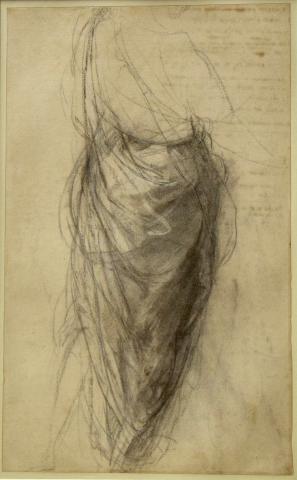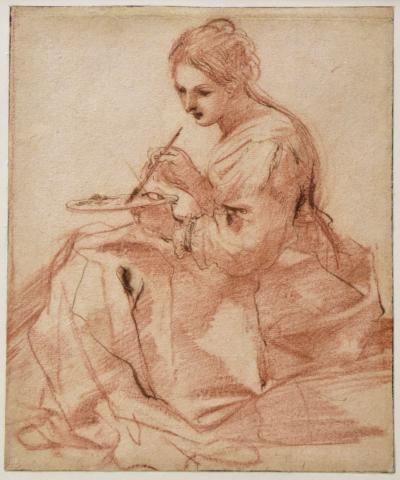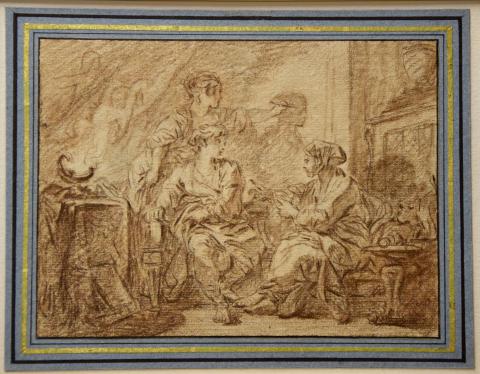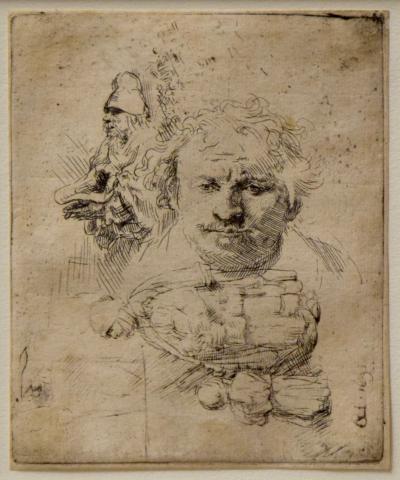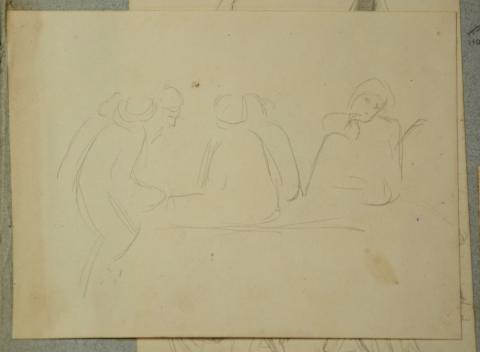Absence 4: Design (Vittoria Fallanca)
The focus of our final seminar on the theme of 'Absence' was on the notion of design. The main aim of this session was to ‘reverse engineer’, as it were, the idea of objects of use. What are the inner workings, conceptual and otherwise, of designed objects? In order to answer this questions we looked back to the polysemic Renaissance concept of disegno (draught/drawing), in order to get students to think about the relationship between thought/intention and material outcome. We thus started with drawings - thinking about qualities of incompleteness, open-endedness, spontaneity - and ended with objects in the galleries that serve a particular function or ‘use’. The aim of the seminar was to think critically about the relationship between these two ends of the design spectrum.
In order to to do this, we began by considering an interestingly 'liminal' object in the European Renaissance Gallery: a brush rendition of the Holy Family attributed to Michelangelo. This artwork is 'liminal' because even though we would probably consider it a drawing, it is framed and hung up in a room filled with Renaissance paintings and displays certain characteristics more readily associated with painting, including the use of a brush and painting ground. This object raises questions about genre (how do we decide what is a drawing and what is a painting?) but also about intention: what is the relationship between an artist's aims for an artwork and the object that we see and interact with? Drawings provide an interesting medium through which to analyse these questions, particularly drawings such as this Michelangelo piece which bear traces of the artist's experiments and 'workings out' on their very surface.
To develop these ideas, we looked at different kinds of drawings from the Ashmolean print rooms, each of which exemplifies the links between design and absence in different ways. These are explained in more detail below.
In the second half of the session we began to consider the links between drawing and design through the concept of 'affordance' (those aspects of an object that determine how it might be used). We thought about the fundamentally undetermined nature of those aspects, and how the same object can 'afford' a variety of different things for different people. We looked at a poem by Elizabeth Jennings, 'Absence', which evocatively brought to the fore the relationship between absence and affordance, as well as poems by Pablo Neruda ('Ode to Things'), Sylvia Plath ('Mirror') and a 16th-century Middle English poem called 'The Carpenter's Tools'.
We then moved to the galleries where we split up into four groups, each of which were tasked with considering a different object and creating an 'Everything is Alive'-style podcast around their object. The 4 objects were:
- A 16th-century runic almanac from Sweden
- A cycladic figure said to be from Amorgos, Greece from between 2800–2300 BC
- An 17th-century earthenware dish from France
- A ring with accompanying human bone fragment from Jericho, from around 6000 BC
You can listen to the podcasts by clicking on the link below this description.
Throughout the afternoon, the theme of ‘absence’ provided a helpful framework and acted as a calibrator for our discussions and activities. Some of the questions that we thought about included:
- How does what is perceptually absent (idea, intention) relate to what is perceptually present (marks on the page, the formal features of an object)?
- What are some of the different ways in which design might ask us to conceive of absence (unfinishedness, openness, underspecification…), and do these necessarily imply a lack?
- What is the relationship between absence and (object-centred/object-directed) agency?

